Books have the power to cross boundaries, but language often creates a barrier. Anyone who’s ever wanted to read, share, or publish content in English for Urdu-speaking audiences knows how difficult it can be. English to Urdu Book Translation is about making stories, lessons, and ideas accessible to more people, not just about converting words. That’s why so many readers and writers now rely on smart AI tools, which let you upload your book and quickly get an Urdu version. In this guide, I’ll show you three easy methods for English to Urdu Book Translation.
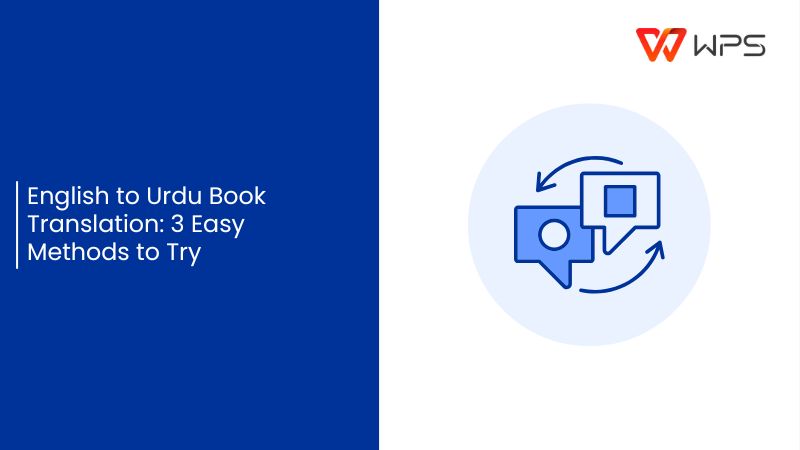
Why Translate Books from English to Urdu?
When I think about why English to Urdu book translation is worth considering, three reasons stand out. First, it directly impacts students and researchers who rely on Urdu to understand complex subjects. Second, it opens the door for general readers who want to explore literature and ideas without the barrier of language. And third, it creates opportunities for writers and publishers to reach an entirely new audience. Each of these has its own weight, and together they show why translation is about access, growth, and connection.
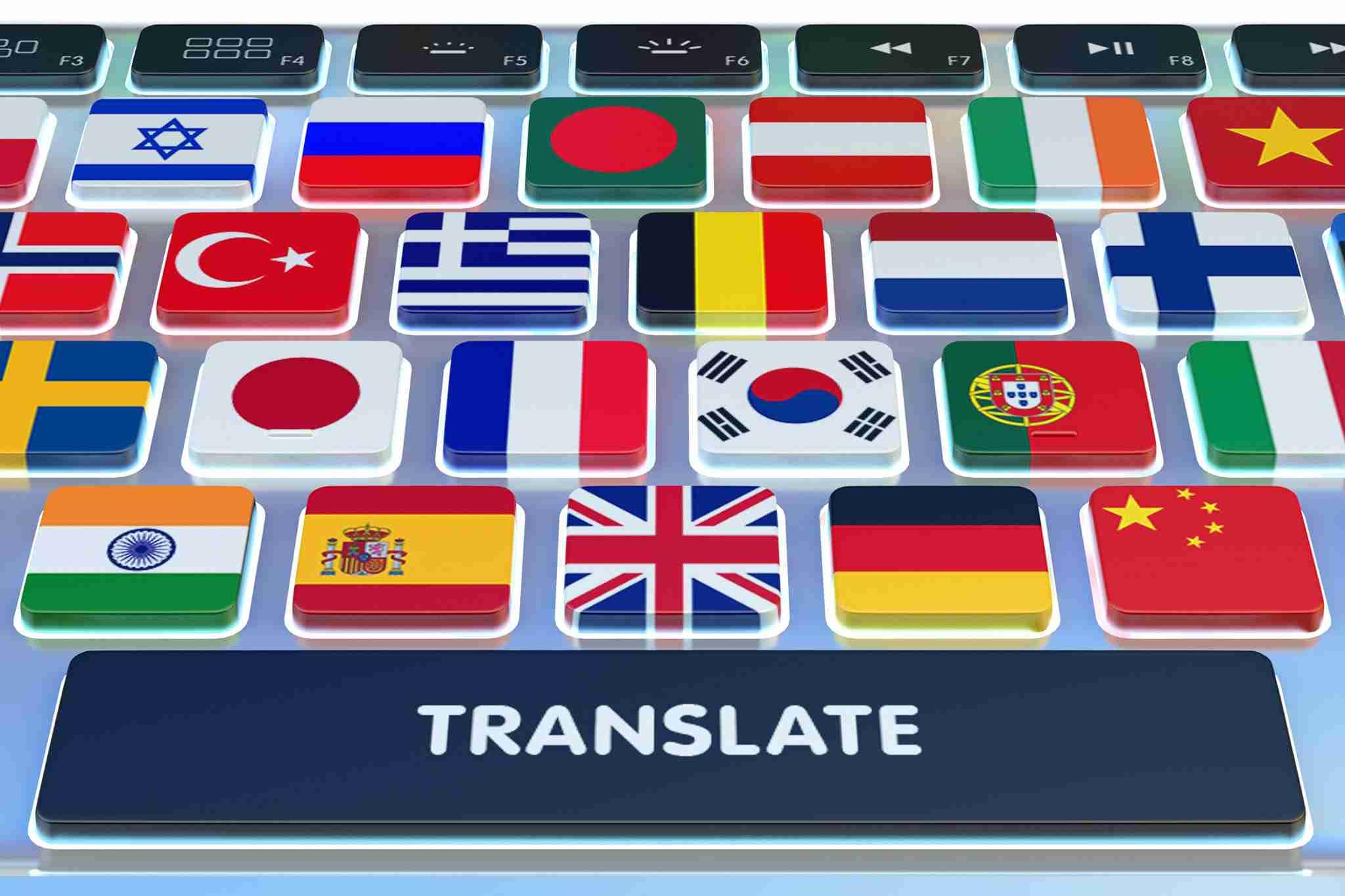
To make this more concrete, let’s look at three areas where translation creates real value:
For students and researchers: Access to textbooks, research papers, and reference material in Urdu makes learning smoother and more inclusive.
For general readers: Popular novels, biographies, and self-help books become more enjoyable when read in a language that feels natural.
For writers and publishers: Translating into Urdu helps expand readership in South Asia, where millions prefer consuming content in their native language.
In short, translating books from English to Urdu is about bridging opportunities. It can make the difference between being left out and being fully included, especially now that online tools for English to Urdu book translation make the process faster and more accessible than ever.
Best Tools & Resources for English to Urdu Book Translation
Once you’ve understood why English to Urdu book translation matters, the next thing you need to turn your attention to are the tools that have the ability to handle a full manuscript instead of just a few lines of text. I’ve tried out a lot of free and paid platforms, including some free English to Urdu book translation websites, and the difference is huge. There are services that work fine for short passages but fail to keep formatting intact, while others manage entire documents without disrupting the flow. The silver lining is, there are a few reliable tools that actually handle full book translations well.
1. AnyDoc Translator
The first tool worth looking at is AnyDoc Translator, which is arguably one of the most reliable options for larger projects. Unlike platforms that only handle plain text, AnyDoc lets you upload full Word or PDF manuscripts and keeps the original structure intact.
For image-based translation, it currently supports more than 46 languages and even allows batch processing of up to 50 images at once. That makes it useful not just for book manuscripts but also for scanned archives or collections of notes that need to be translated together.
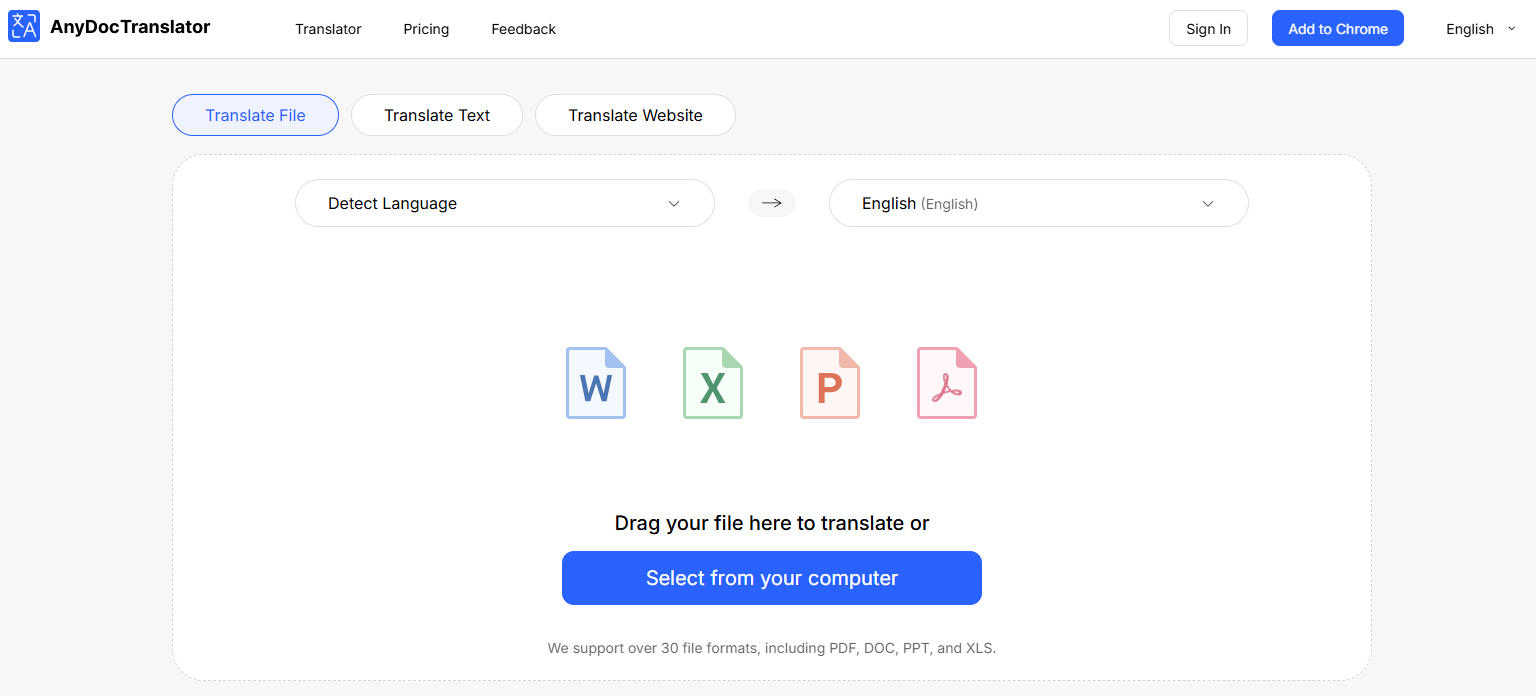
Features
Uploads and translates full documents, including books, PDFs, and Word files.
Completely supports English to Urdu translation with formatting intact.
Does not require any sort of setup or installation, it runs entirely online.
Allows batch processing of up to 50 images at once for faster projects.
Pros
Interface is fast and user-friendly.
Handles large files like eBooks.
Maintains document layout after translation.
Cons
Requires stable internet.
The free version has size limits; larger books may need a premium plan.
With the basics covered, the real value comes in knowing how to actually use AnyDoc Translator for an English to Urdu book translation. The process is quite simple once you know where to start, and if you follow the steps in order, you’ll be able to go from uploading your file to downloading a complete Urdu version without losing structure or formatting.
Step 1: Go to the AnyDoc Translator website and click the “Translator”tab in the top toolbar.
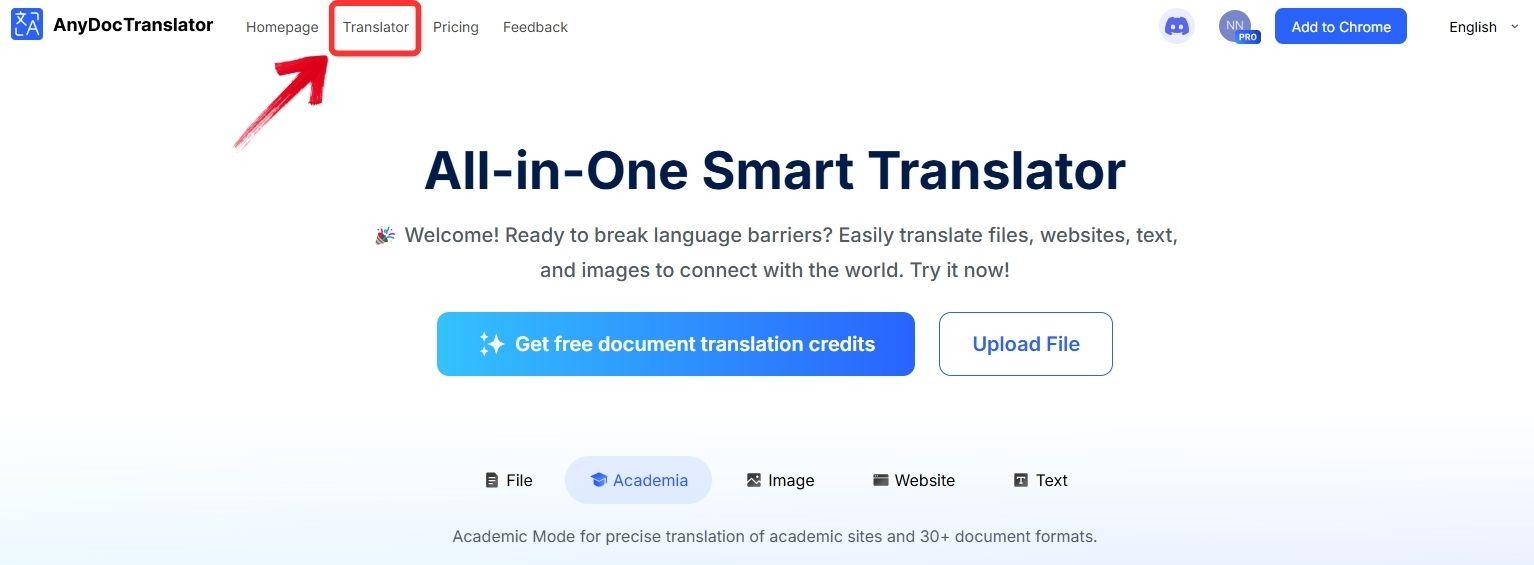
Step 2: AnyDoc supports translation for PDFs, text files, images, and even websites. For this guide, select the“Translate File” tab.
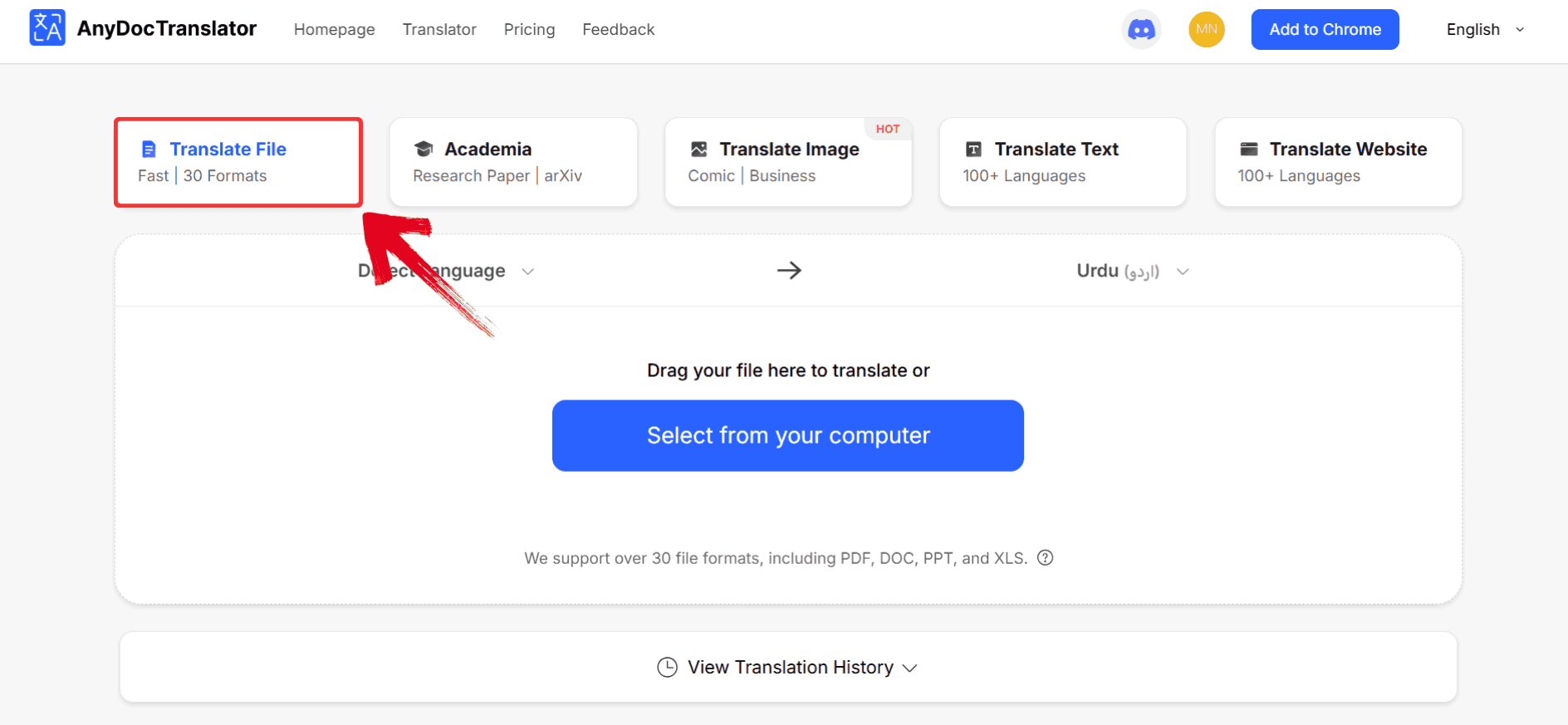
Step 3: Click the “Select from your computer” button to upload the image you want to translate, or drag and drop it into the upload area.
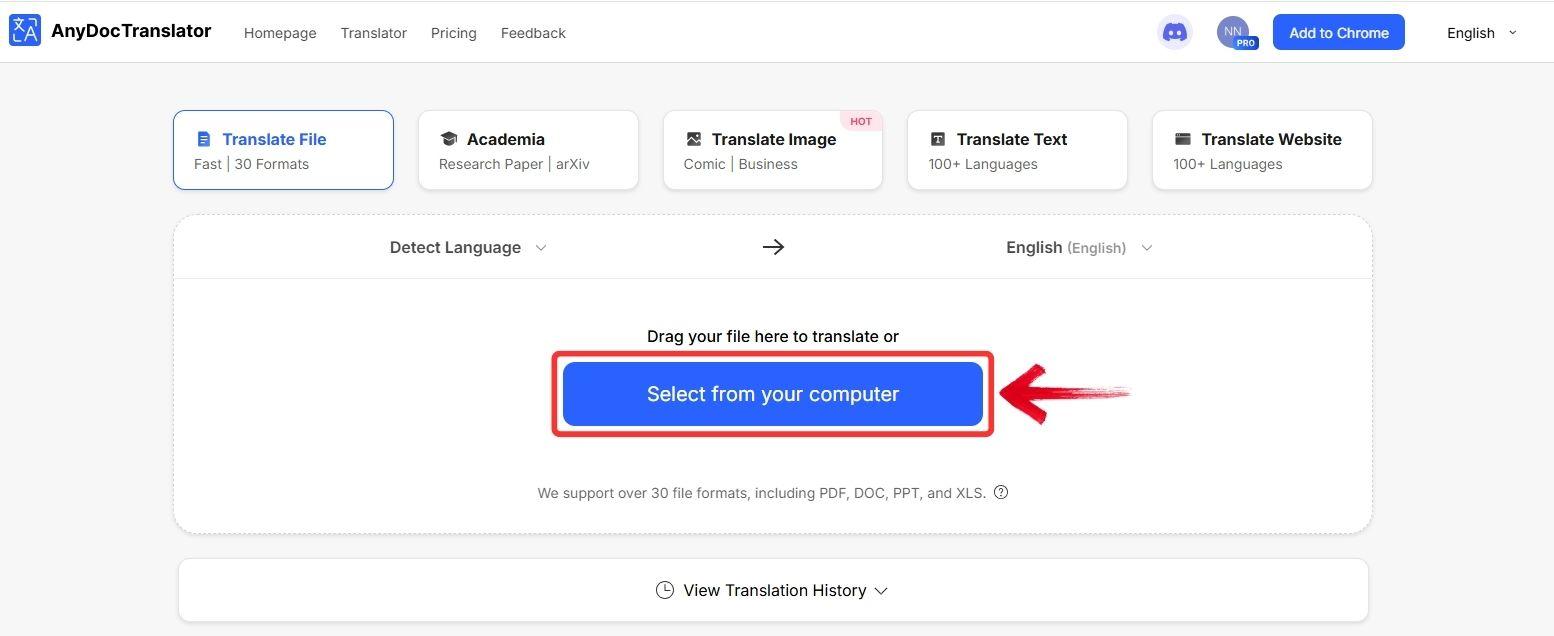
Step 4: Once AnyDoc auto-detects the language of the original text, click on the globe and select“Urdu” as your target language. AnyDoc will automatically start translating the image into Urdu.

Step 5: To save the results, click the“Download” button. You can choose to download the image with the translated text or just the translated text as a .TXT file.
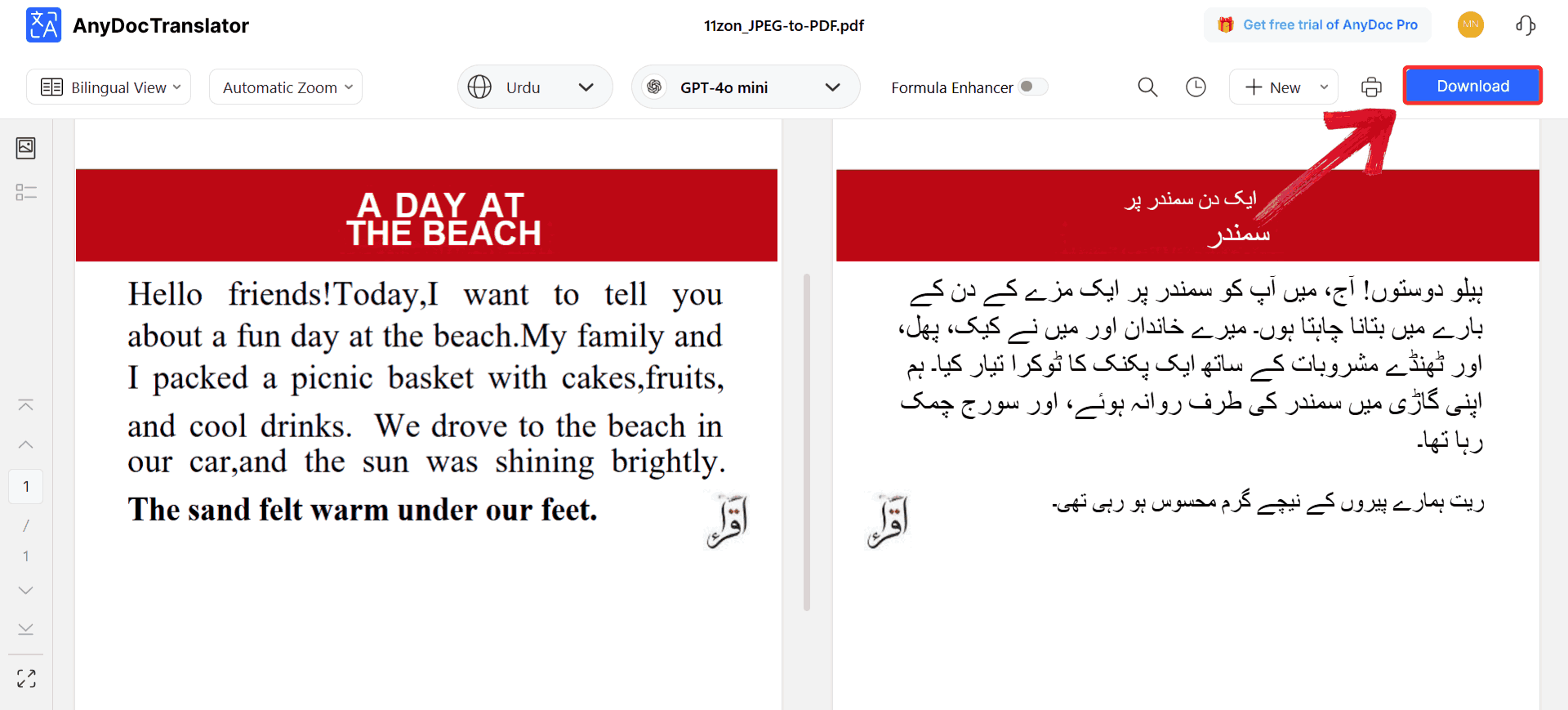
2. Translate A Book
Another option you might come across is Translate A Book, a niche website designed specifically for book translation. It’s simple to use and doesn’t require any installation, which makes it appealing if you just want to try out a quick English to Urdu conversion without dealing with extra steps.
The platform focuses on straightforward uploads, and one useful feature is that it automatically splits longer texts into sections, making it easier to process larger manuscripts without overwhelming the system.
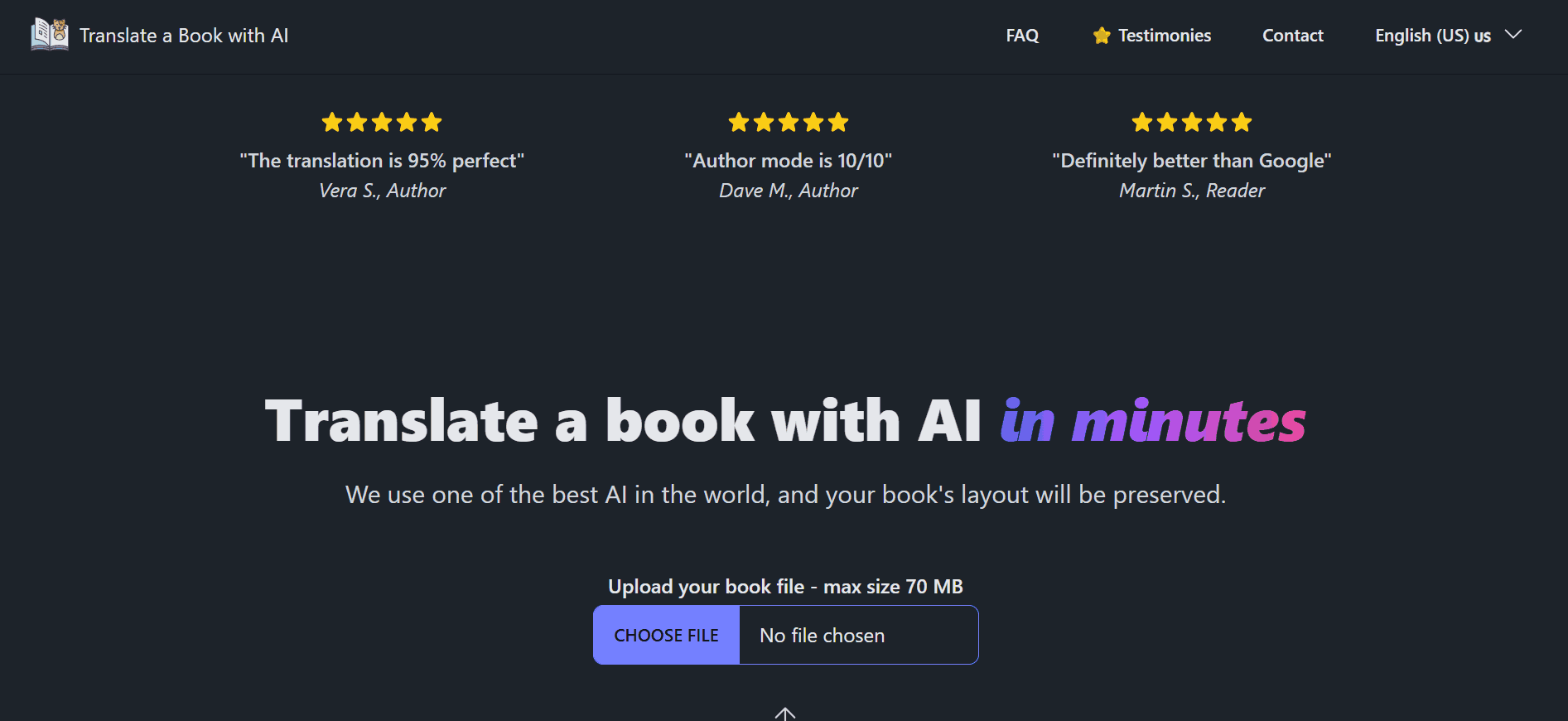
Features
Designed specifically for translating full-length books rather than short snippets of text.
Offers direct English to Urdu book translation without requiring any manual setup.
Provides an online editor that breaks the book into manageable sections.
Runs entirely in the browser, so you don’t need to download software or install add-ons.
Pros
Created with book projects in mind.
Supports multiple formats like EPUB, PDF, and DOCX.
Free to use for small projects.
Cons
You have to purchase a plan to get your manuscript translated.
It may take longer to process large books
Once you’re familiar with what Translate A Book offers, the next step is actually using it to convert your manuscript. Here’s how to get started.
Step 1: Head to the Translate A Book websiteand click on “Choose File” to select the manuscript you want to translate from your device.
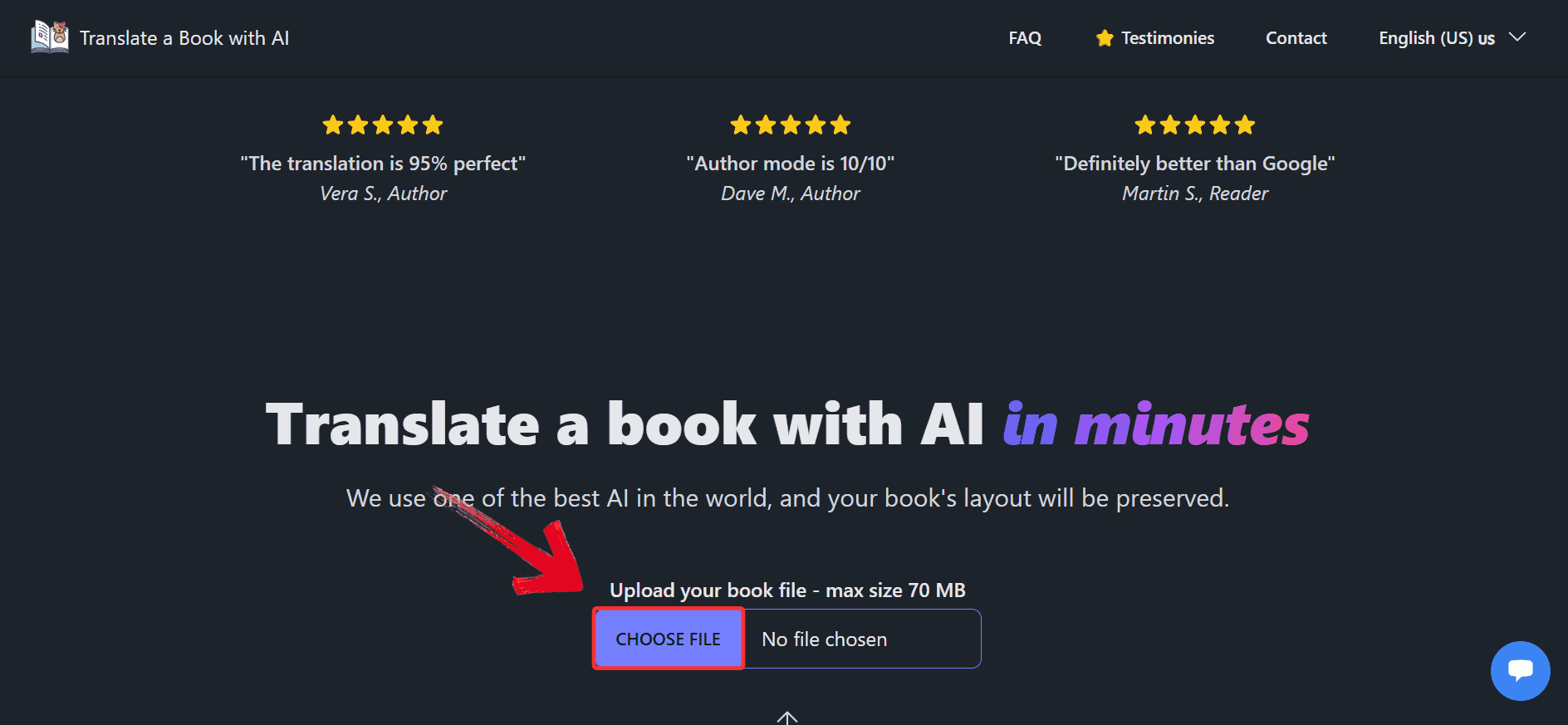
Step 2: Once the file is uploaded, choose the“Target Language” option to open the dropdown menu.
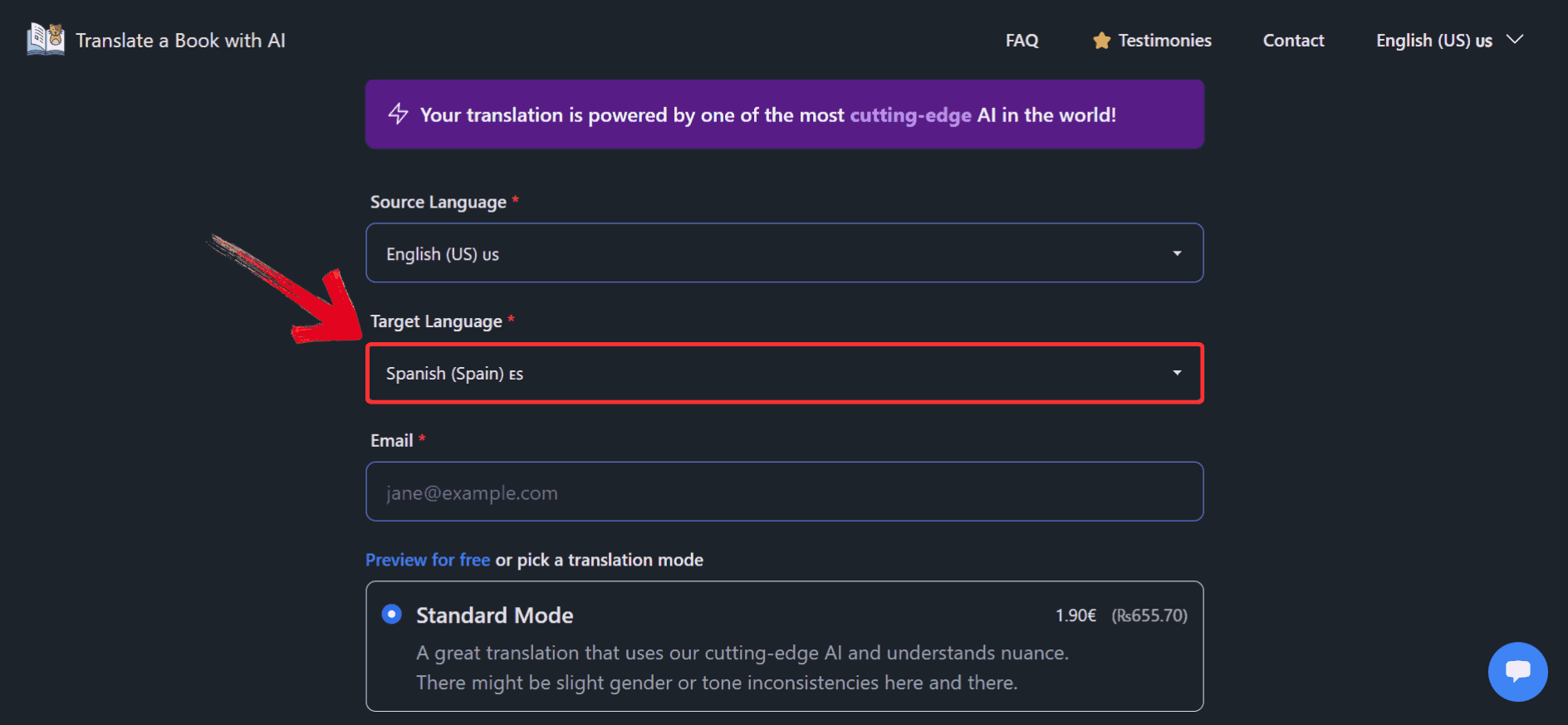
Step 3: From the list of available languages, select“Urdu” as your choice.
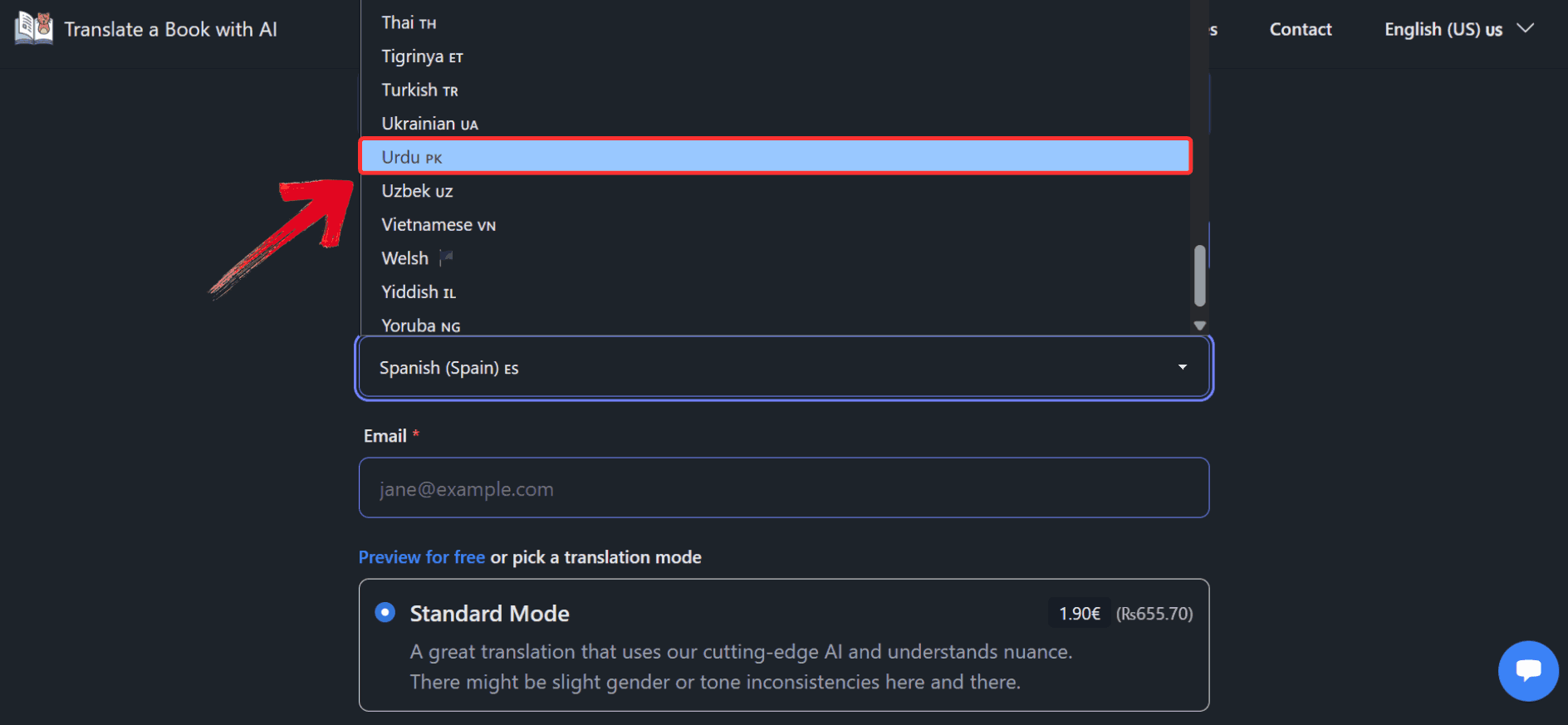
Step 4: Next, you’ll be asked to pick a plan. There are three available, and if you’re just looking for the simplest option, the “Standard Mode” is the most basic one to start with.
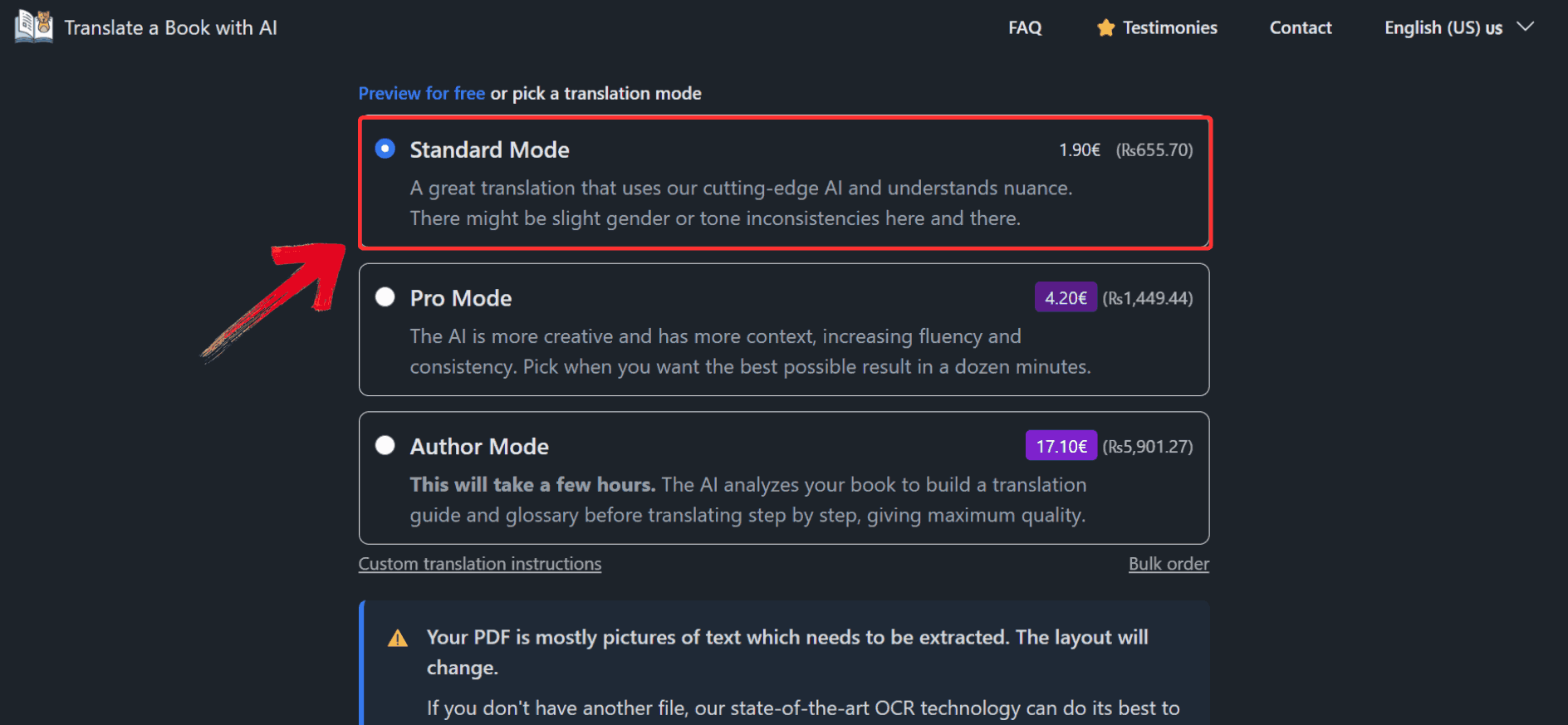
Step 5: Finally, click on “Get your full Urdu (PK) translation” to proceed with payment. Once the process is complete, your translated document will be ready in Urdu for download.
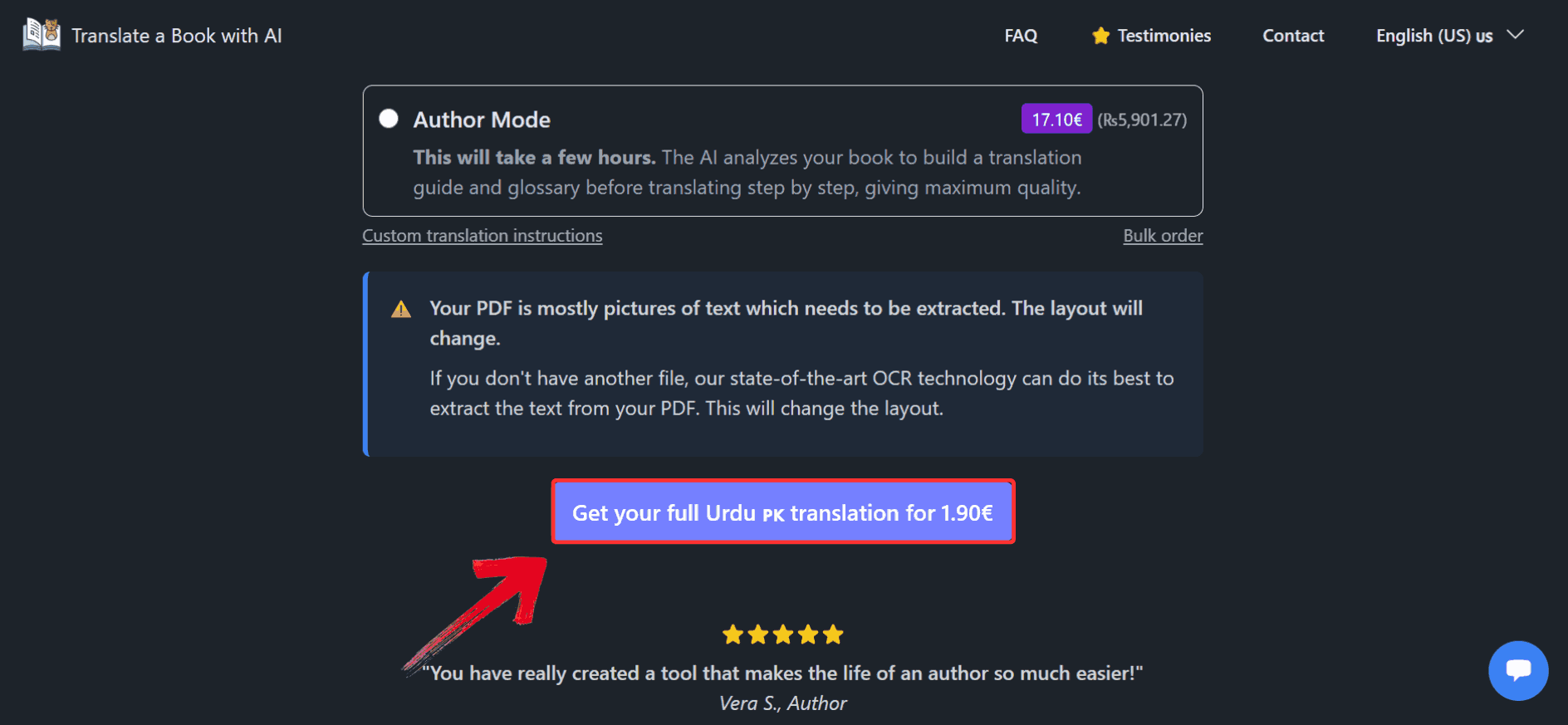
3. Online Doc Translator
The third tool worth considering is Online Doc Translator. It’s a free browser-based service that focuses on quick document translations. It’s built on Google Translate’s engine, which means it can handle English to Urdu text with decent accuracy while keeping much of the original formatting intact.
One advantage is that it accepts common file types like Word, PDF, and PowerPoint, making it convenient for users who want to translate more than just books. However, since it relies heavily on Google’s backend, the translations can sometimes feel less refined compared to tools designed specifically for longer manuscripts.
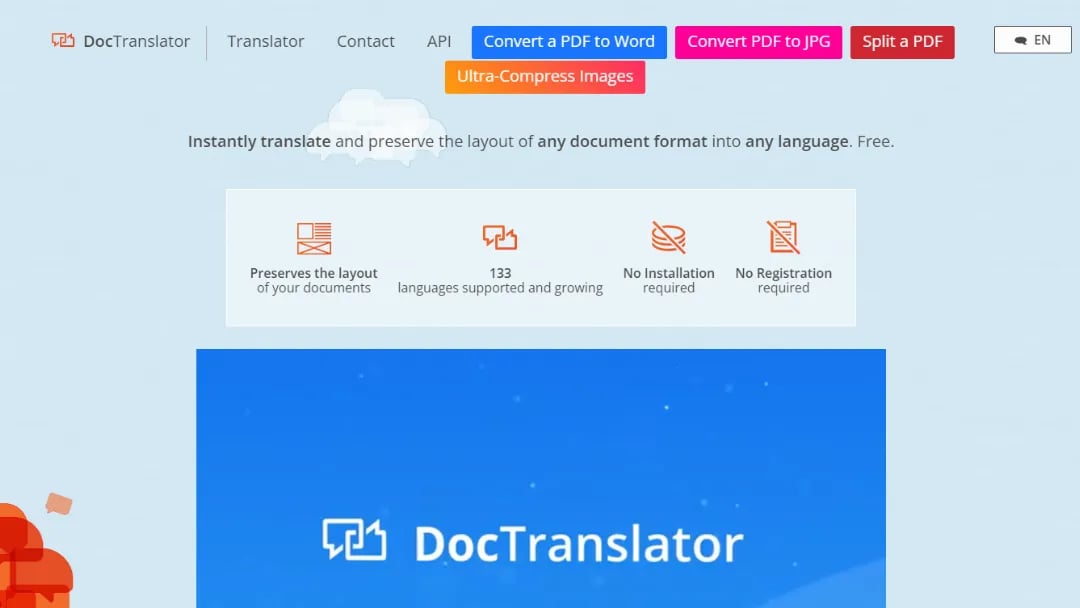
Features
Supports multiple file formats including Word, PDF, PowerPoint, and Excel for translation.
Uses Google Translate’s engine to provide English to Urdu book translation with preserved formatting.
Allows you to upload documents up to 10 MB in size, which is suitable for short to medium-length manuscripts.
Pros
100% free to use.
Maintains formatting and design.
No installation needed.
Cons
Accuracy depends on Google Translate’s output.
May struggle with idioms or complex sentences.
Now that you know what Online Doc Translator offers, it’s time to look at how the process works. The setup is quite simple, and by following a few quick steps you can upload your document and download a translated version without needing to install anything.
Step 1: Head over to the Online Doc Translator website and click on “Translator” from the top navigation bar.

Step 2: On the next page, click “Upload File” and upload the book or document you want to translate.
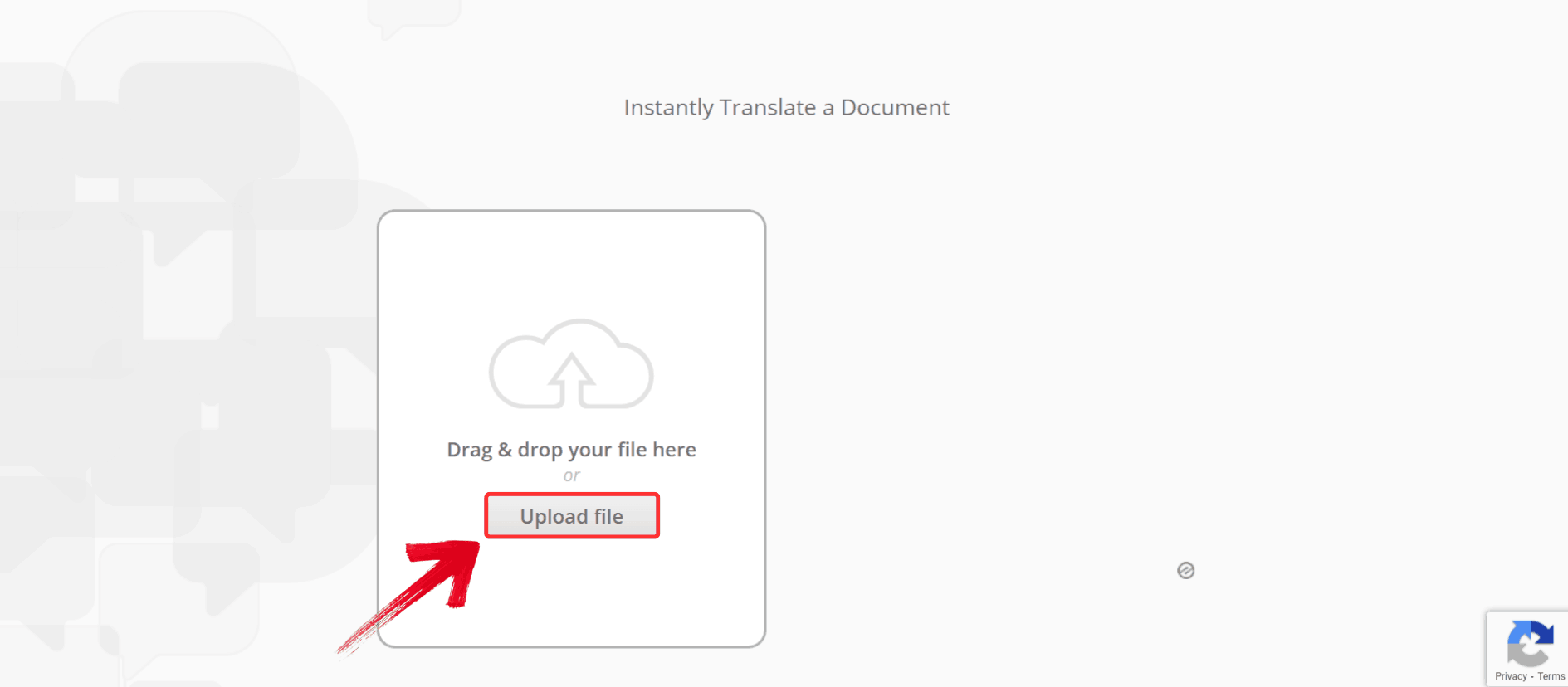
Step 3: Once the file is uploaded, look to the right-hand side for the Target Language option and select Urdu from the list.
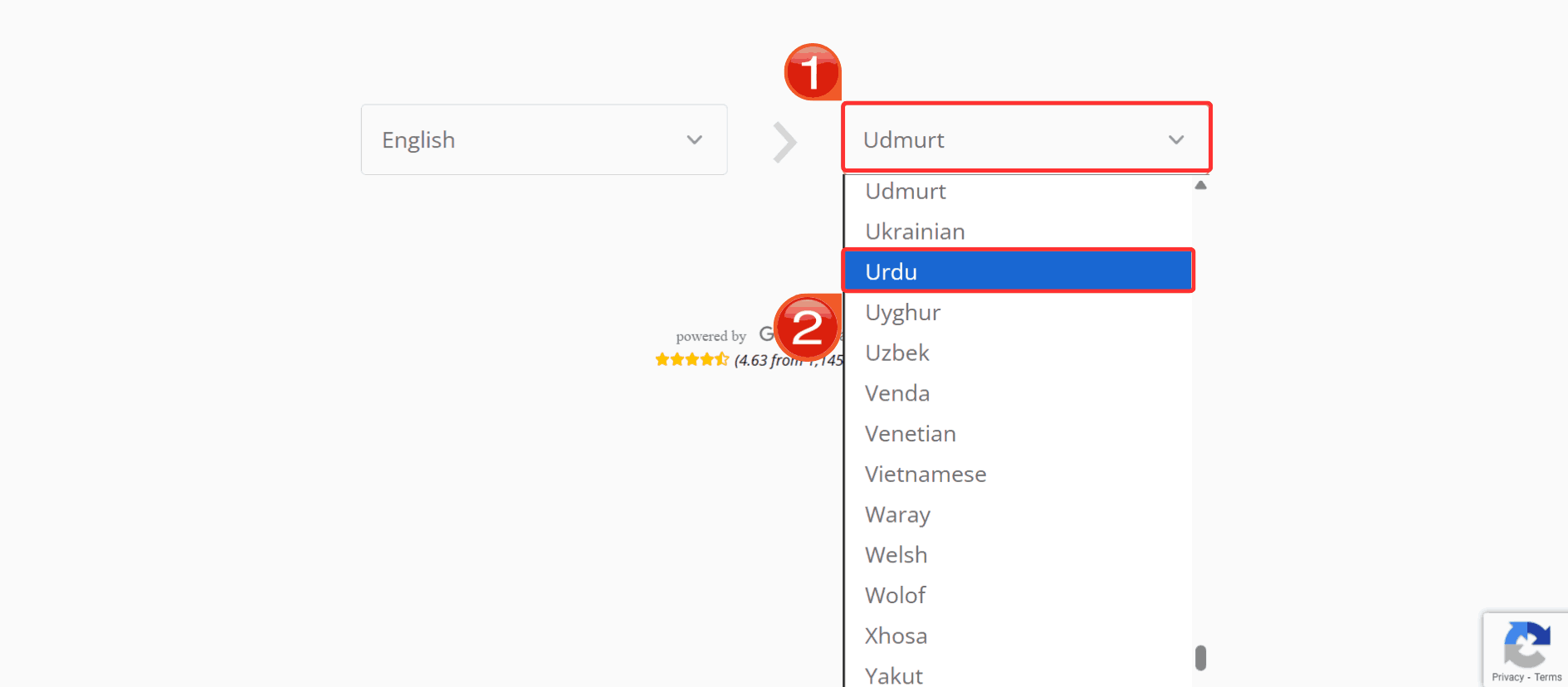
Step 4: Finally, click on“Translate”, and within a few moments your document will be ready in Urdu.
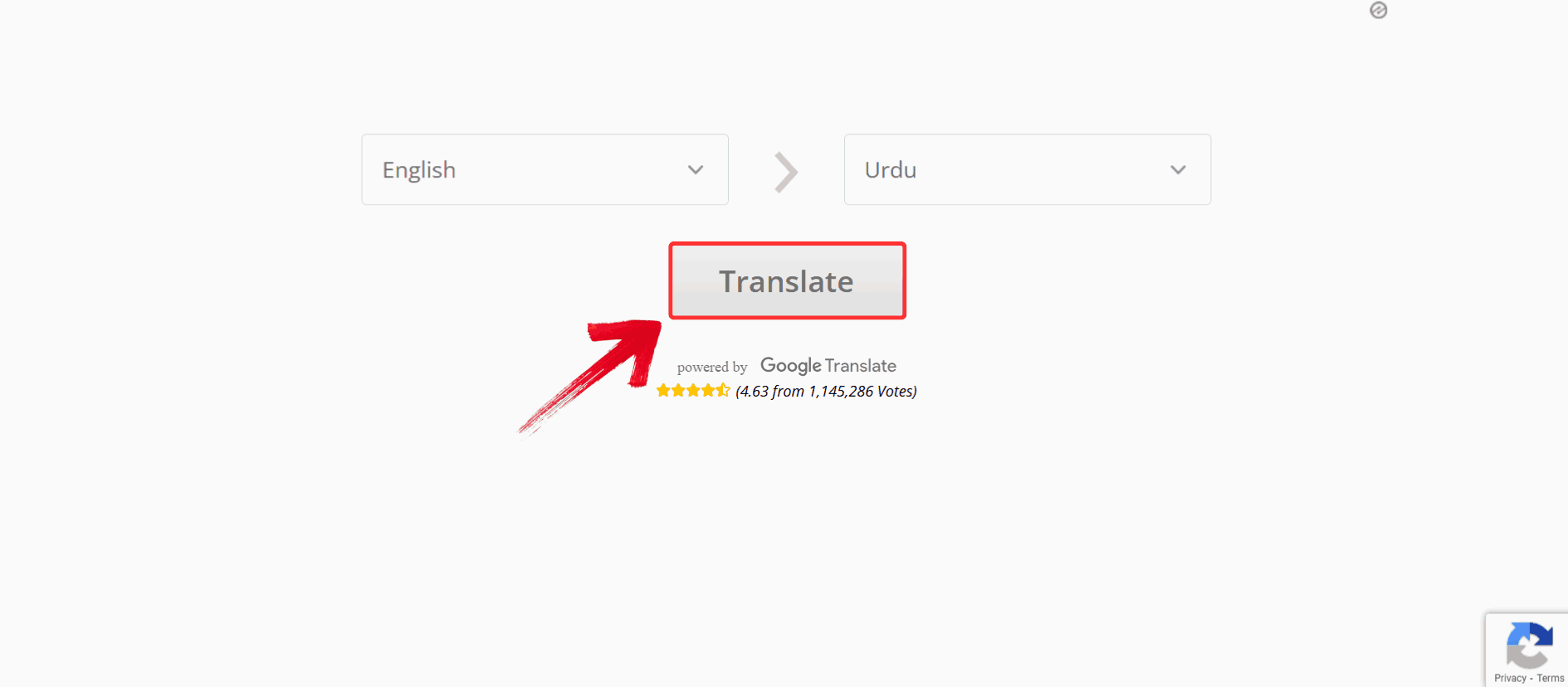
Comparison of English to Urdu Book Translation Tools
When using different tools, people think the differences are always obvious at first glance which is not the case. For example, AnyDoc handles larger PDF files without breaking the formatting, which was a big deal when I tried translating a 200-page book. Translate A Book, on the other hand, was more focused on longer manuscripts but took a little more processing time. Looking at these tools side by side gives you a clearer sense of which one is practical for your specific needs whether that’s accuracy, file size, or just getting a translated copy free of cost.
| Tool | Best For | Strengths | Limitations |
|---|---|---|---|
| AnyDoc Translator | Large projects, professional use | Handles big files smoothly, keeps formatting intact, accurate with complex text | File size limits on free plan, requires internet connection |
| Translate A Book | Novels and long manuscripts | Specifically built for books, supports EPUB/PDF/DOCX | Processing takes longer for large files, advanced features need signup |
| Online Doc Translator | Students & casual readers | Completely free, keeps layout, easy for quick use | Accuracy depends on Google Translate, may miss idiomatic expressions |
The main difference comes down to balance. Translate A Book is tailored for long manuscripts but can feel slower, while Online Doc Translator is free and quick but sometimes rough around the edges.
AnyDoc Translator manages to sit in the middle. It’s fast enough for everyday use while still keeping the level of detail you’d expect for something as long and structured as a book. That balance makes it easier to rely on without worrying about trade-offs.
FAQs
1. Is English to Urdu Book Translation free?
Yes, several online tools like Online Doc Translator provide free services, though premium versions may offer better accuracy and larger file support.
2. Which is the best software for English to Urdu Book Translation?
AnyDoc Translator and Translate A Book are both excellent. If you want something free and quick, Online Doc Translator is the go-to option.
3. Can students use these tools for study materials?
Absolutely. English to Urdu Book Translation for students helps make complex English study resources easier to understand.
4. Are these tools 100% accurate?
Not entirely. While they do a great job, it’s always wise to review the translated Urdu version for grammatical accuracy and readability.
From English to Urdu, The Last Chapter
English to Urdu Book Translation no longer needs to be a time-consuming task. With today’s AI-powered tools, you can turn entire manuscripts into Urdu in minutes while keeping the formatting intact. Translate A Book and Online Doc Translator are both useful options, especially for people who want to use the tools casually or for students who just want a free solution.
But when it comes to handling larger projects with fidelity and precision, AnyDoc Translator takes the lead. It combines speed, reliability, and a user-friendly interface that makes the whole process feel effortless. If you’re serious about translating books from English to Urdu and want results you can depend on, AnyDoc Translator is the tool worth starting with.

